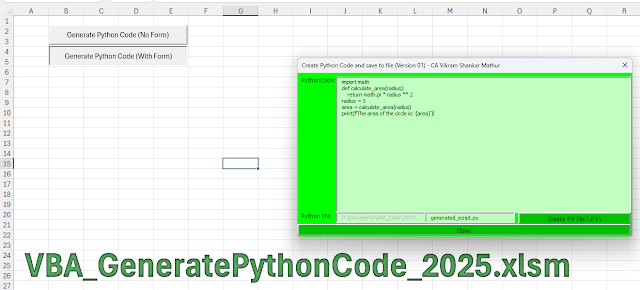I used ChatGpt to understand how to do this! See what I got as an answer - so blogging this !!
___________________________________________________________________________________
The DSUM() and DCOUNT() functions in Excel are part of Excel’s database functions, which allow you to perform operations based on specific criteria within a table-like range (database).
1. DSUM() Function
The DSUM() function sums the values in a specified field (column) of a database that meet specific criteria.
Syntax:
excel
DSUM(database, field, criteria)
database: The range of cells that makes up the database (including headers).field: The column to sum, which can be the column header (in quotes) or the column number.criteria: The range that contains the conditions for selecting rows.
Example:
Let's say you have the following data in the range A1:C6:
| Name | Age | Salary |
|---|
| John | 28 | 50000 |
| Jane | 34 | 60000 |
| Mike | 28 | 55000 |
| Anna | 40 | 70000 |
| Chris | 34 | 48000 |
You want to sum the salaries for people aged 28. You can set up the criteria in another range, say E1:F2, where you define the criteria like this:
Then, use the formula:
excel
=DSUM(A1:C6, "Salary", E1:F2)
This will sum the salaries of people aged 28 (John and Mike), resulting in 50000 + 55000 = 105000.
2. DCOUNT() Function
The DCOUNT() function counts the cells that contain numbers in a specific field of a database that match given criteria.
Syntax:
excel
DCOUNT(database, field, criteria)
database: The range of cells that contains the database.field: The field (column) to count, which can be the column header or column number.criteria: The range that contains the conditions for selecting rows.
Example:
Using the same data, if you want to count the number of people aged 34, you set up the criteria in E1:F2 like this:
Then, use the formula:
excel
=DCOUNT(A1:C6, "Age", E1:F2)
This will count how many people have the age 34 (Jane and Chris), resulting in 2.
Notes:
- The criteria range can be more complex with multiple columns (e.g., filtering by both age and salary).
- The
field argument can be the column header (e.g., "Age", "Salary") or the index of the column (e.g., 2 for the second column).




Awesome!!
ReplyDelete